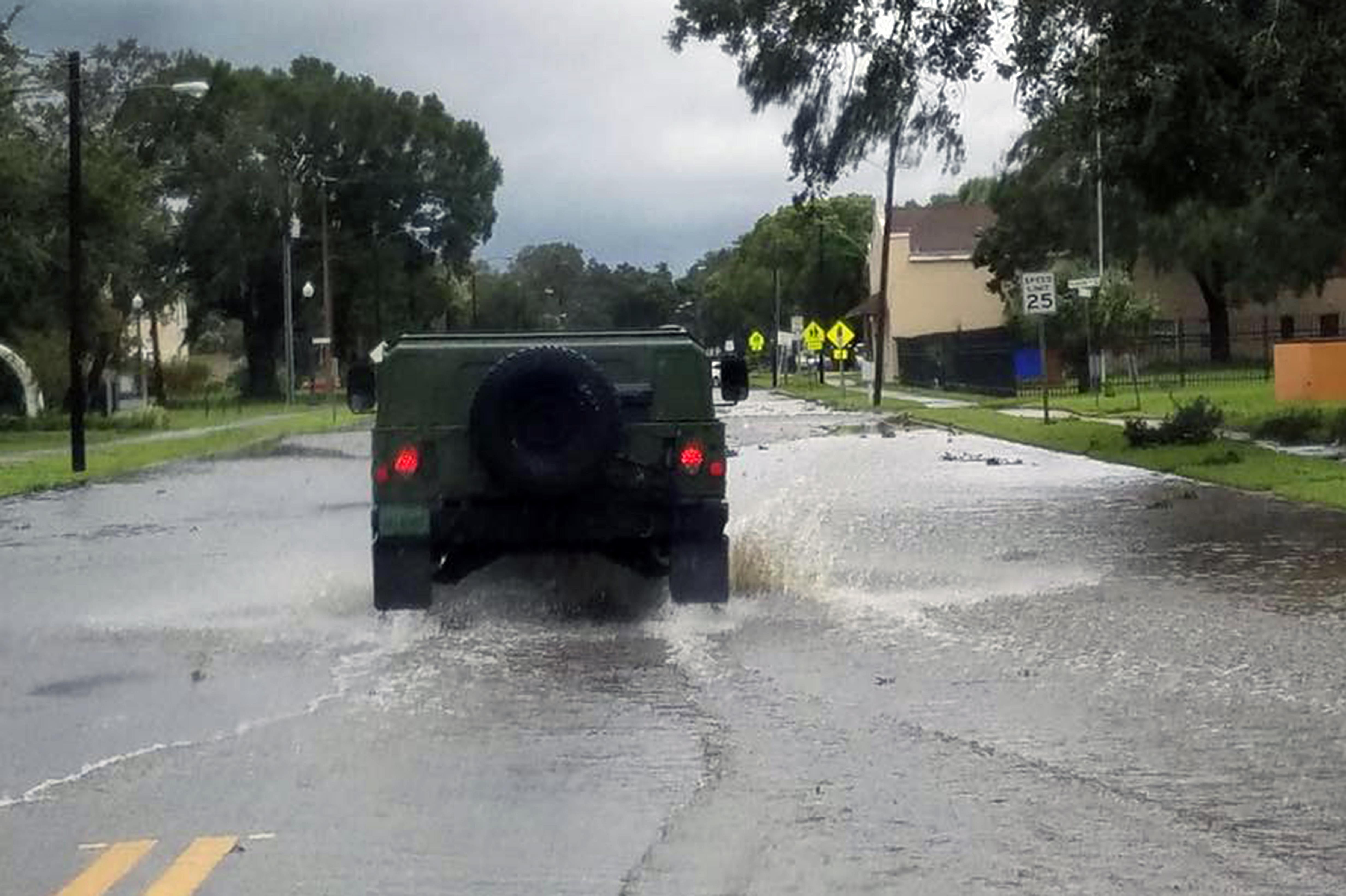ARLINGTON, Va. — Florida National Guard members began aerial and ground search-and-rescue operations on Friday as Hurricane Matthew continued to move northward, pummeling the U.S. southeastern coast with heavy rains and wind.
“The Guard is very well postured to be able to support with well-trained soldiers and airmen in specific skills sets to assist civil authorities,” said Air Force Maj. Gen. J.C. Witham, the director of domestic operations at the National Guard Bureau here.
“These primarily include lifesaving techniques or lifesaving mission sets, including search and rescue, humanitarian relief support, support to law enforcement and security assistance, and also support of shelter operations across the adversely impacted states.”
More Than 9,000 Guard Members Responding
As of Saturday morning, more than 9,000 National Guard members were responding in the aftermath of the storm, which has left four dead and thousands without power in the United States and caused millions of dollars of damage as it pushed northward.
The storm was a Category 5 hurricane when it pummeled Caribbean islands Oct. 5-6, leaving nearly 500 dead in Haiti.
The National Weather Service downgraded the storm to a Category 2 hurricane as it churned off the South Carolina coast and anticipates the storm will continue to lose strength as it moves north.
“We remain hopeful that the storm track remains primarily off the coast, as that will minimize the wind damage and damage to infrastructure in those Southeastern states that would be impacted,” Witham said.
Supporting State and Local Authorities
Guard members will continue with search-and-rescue operations, he added, but they also are supporting state and local authorities with route clearance and debris removal, security operations and infrastructure assessments.
Guard members also stand ready to assist with other missions, such as transportation and distribution of water, ice and food from centralized locations as residents and local authorities recover from the storm.
“As you set up centralized locations where supplies may flow into, we can further distribute them using military capacity out to other locations,” Witham said. “And then the Guard would traditionally man some of those points of distribution.”
As the hurricane neared, Guard members throughout the affected states aided local authorities with evacuation efforts of coastal areas while also pre-staging needed equipment, vehicles and helicopters for response operations.
Additional helicopter assets were brought in from the Mississippi, Alabama, and Tennessee National Guards through use of the Emergency Management Assistance Compact, Witham said. The compact allows for mutual assistance from one state to another in an emergency response, including Guard assets.
Operations Running Smoothly
Response operations have been running smoothly, said Army Brig. Gen. Ralph Ribas, the director of the joint staff for the Florida Guard. “It’s been almost 10 years since we’ve had to do this, but there’s a lot of experience, and everyone’s going to do what it takes to be successful,” he said.
The response to Hurricane Matthew is the largest Guard response to a hurricane since 2012, when Hurricane Sandy struck New York and New Jersey, Witham said.
Meanwhile, as Guard members in the Southeast continue to respond to the storm, aircrews with the Ohio Air National Guard’s 179th Airlift Wing have been flying equipment and troops to Haiti in support of ongoing humanitarian relief efforts in that country after it was devastated by the hurricane.






